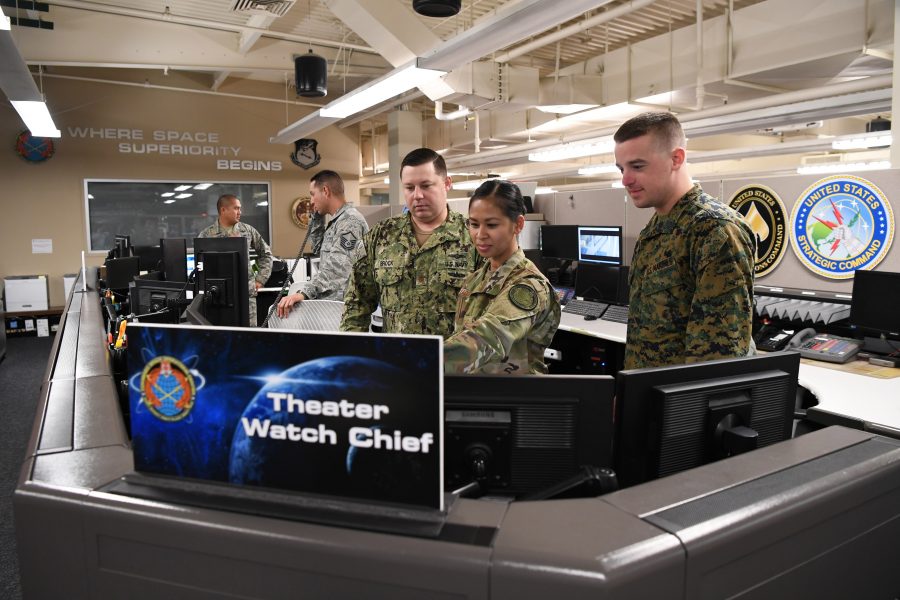VANDENBERG AIR FORCE BASE, Calif.—The Space Force’s Combined Space Operations Center here is finding its rhythm with “Section 31,” a software coding team tasked with regularly rolling out new space command and control apps.
“Right now, onboarding new tools is a full-time job,” CSpOC boss Col. Scott Brodeur told Air Force Magazine in a recent interview. “Articulating our requirements, working with companies to build software, deploying the software and making it work—I have a division that just works that full-time.”
Space C2 has gotten a makeover in the past few years as it transformed from the behind-schedule, over-budget Joint Space Operational Center Mission System into an effort dubbed Enterprise Space Battle Management Command and Control. It was again renamed as simply Space C2.
As part of that overhaul, Airmen turned to agile software development principles to quickly work through a list of the most pressing needs and pop out solutions faster than a traditional program. Typical Pentagon software procurement efforts wait multiple years for contractors to address all requirements instead of delivering apps and updates as they become available.
The Space Force wants space surveillance tools that are more accurate and sustainable, as well as a high-accuracy catalog of objects in space, among other products that will give the military a better picture of what systems on orbit are doing. It requested about $150 million for the Space C2 digital pilot program in its fiscal 2021 budget.
Section 31 started work under Kobayashi Maru, a larger program office handling space software out of Los Angeles Air Force Base, Calif., in February 2019. It had launched three product teams by early September. Airmen are learning from and coding with the software firm VMWare—which recently bought Pivotal, another development firm that has helped the Air Force get its blue-suit coding efforts up and running.
“The first product team has built a High-Interest Event Tracker that is meant for commercial, government, and allied space operators who own, operate, and command space assets,” Section 31 Product Director Capt. Carlo Viray said in a September 2019 release. “This application allows operators to monitor, track, and display information regarding potential satellite conjunctions, space launches, satellite de-orbits, re-entries, and other high interest space events.”
A second team has created a radio frequency deconfliction tool to cut down on the time it takes to process a request to use that spectrum. The third team was tasked with building a tool for intelligence analysts to more efficiently collect data from ground-based radars and other sensors.
“Section 31 product teams can truly achieve continuous delivery and have the ability to implement changes of all types—new features, configuration changes, bug fixes, and experiments—into production, or actually into the hands of the intended users, safely and quickly in a sustainable way,” Viray said.
Palo Alto, Calif.-based VMWare is the CSpOC’s main acquirer and developer through Section 31 (named for the secretive intelligence agency in “Star Trek”), Brodeur said. He meets with a development team for updates every two weeks.
“They’re working five lines of effort for me right now through,” he said. “Although there are some more efforts that are supporting the broader enterprise that we will bear fruit from, they’re working off my list of requirements as we speak.”
Brodeur’s top priority: being able to look at a common operating picture of all space domain awareness information from across the coalition—countries like Canada, the United Kingdom, Australia, New Zealand, France, Germany, and others.
Section 31’s contributions have been helpful so far, he said. But there are other large projects in the works.
“I’m looking for them to build an electromagnetic interference common operational picture, and what we call a ‘space collaboration tool suite’ that’s coalition-friendly,” Brodeur said.
That means tools and interfaces that can automate certain processes, as well as allow the U.S. to share space data with its military partners in new ways.
“I’m trying to continue to establish ways to communicate securely through classified channels and chat to all of those different ops centers,” he said of domestic and overseas facilities.
Institutional inertia can get in the way despite the push from Air Force leadership to pursue commercial industry’s way of building software. Often referred to as the “frozen middle” for middle managers who resist change, Brodeur said this inertia on issues like procurement and security classification are holding countries back from closer collaboration in space.
“We are met with resistance all the time,” Brodeur said. “It’s a full-time initiative to try to get advocacy to say, ‘We’ve got to be doing this with the coalition to make us stronger.’”
